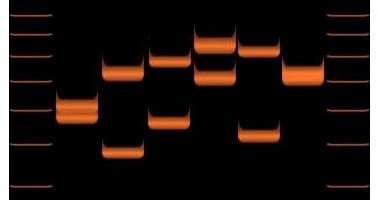US Collecting DNA of Deceased People - DNA Storage and Sampling the DNA of Children
Process of Collecting DNA
The overall process where private organizations in the US collect DNA of deceased people is relatively simple. Funeral homes began offering the service in the late 1990s and the practice continues today. Before embalming a deceased individual, the blood of a person is collected and placed onto specially coated cards. This card is then stored at a vault of a private DNA library. The process can still be completed after a person is embalmed if the family changes its mind. The funeral home simply takes a sample of skin tissue and preserves it in the facility. This allows the family to maintain a long-term genetic fingerprint of loved ones.
Some companies even offer home DNA sample kits to preserve the genetic coding of individuals. Hair, blood and cheek swab samples can be used for long-term storage. Since the popularity of this has led to a number of damaged samples and questionable actions by companies, the City of San Bruno in California offers instructions online for the proper storage of DNA in the freezer.
Ethics of Genetic Sampling
A number of ethical questions have arisen regarding the US collecting DNA of deceased people. In situations such as the untimely death of an individual, there is usually little preemptive thought about storing DNA so the decision is made by family members rather than the person themselves. This has led to questions about privacy and who truthfully has the right to collect the personal genetic data and for what reason. Additional questions involve the rights to collect the DNA of children who die. There is no legal right of children to control what happens to their genetic coding. This has even been addressed in the fact that many parents choose to get DNA samples of their children before birth, which can then be saved in the event of premature death.
Purpose of Deceased DNA

With the US collecting DNA of deceased people, the genetic record of millions of Americans can be isolated and tracked. This will aid people in genealogical research and tracking the family histories of generations of Americans. There is also the possibility that the DNA can be used for future research. By isolating the genetic patterns of those who die from specific diseases, large scientific investigations can take place to link certain genes to diseases over the course of time and through specific haplogroups and families.
Legal Implications of the US Collecting DNA
One legal facet of the US collecting DNA of deceased people stems from the passage of the US Patriot Act in 2001. This act allows the US government to collect DNA samples from live or dead individuals and store them in the world’s largest DNA database, the Combined DNA Index System. Under the act, the government does not need to divulge to a company or family if this sampling has been taken. The legality of this process has been upheld in court, despite the fact that the government itself has admitted there is little use for the US collecting DNA of deceased people.
Resources
“DNA from the Dead” The Genetic Genealogist: https://www.thegeneticgenealogist.com/2007/08/28/dna-from-the-dead-dna-banking-is-legal-but-is-it-ethical-part-i/
“The Government Has Your Baby’s DNA” CNN Health: https://www.cnn.com/2010/HEALTH/02/04/baby.dna.government/index.html
“Civil Liberties Groups Raise Concerns About Collecting DNA from Dead” Sioux City Journal: https://www.cnn.com/2010/HEALTH/02/04/baby.dna.government/index.html
Image Credits
-
DNA. (Supplied by Zephyris at Wikimedia Commons; GNU Free Documentation License; https://upload.wikimedia.org/wikipedia/commons/d/db/DNA_orbit_animated_static_thumb.png)
-
Genetic Test. (Supplied by PaleWhaleGail at Wikimedia Commons; GNU Free Documentation License; https://upload.wikimedia.org/wikipedia/commons/7/78/D1S80Demo.gif)
